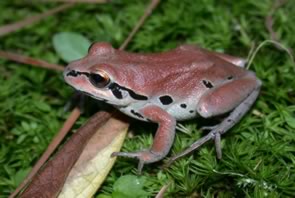
Pseudacris ornata
Photo by JD Willson
Description: The ornate chorus frog is a small, stout frog that is usually reddish brown but can also be tan, grayish or green. A bold black stripe runs through each eye to the shoulder, and dark spots are present on the sides, lower back and near the groin. The groin and underside of each thigh are spotted with bright yellow.
Habitats and Habits: These frogs inhabit longleaf pine stands and pine savannas in the southern Coastal Plain. They are primarily nocturnal and are seldom encountered outside the breeding season. Breeding occurs in temporary ponds, Carolina bays and ditches. Females deposit clusters of 10 to 100 eggs on vegetation, and tadpoles require eight to 12 weeks to transform.
Call: Ornate chorus frogs call from December to March. Their call is a shrill, bird-like peep that resembles the call of a spring peeper but is more rapid, metallic and monotonic.
Frog Fact: Populations of the ornate chorus frog are disappearing in North Carolina due to destruction of temporary wetlands in longleaf pine ecosystems.
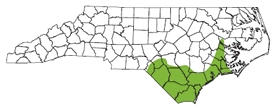
The shaded region represents the range of the ornate chorus frog in North Carolina.
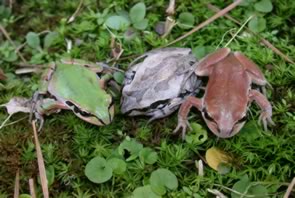

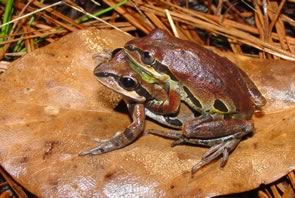
Photo by JD Willson
An ornate chorus frog calling.
Photo
by Tom Luhring
Two ornate chorus frogs in amplexus.
Photo by Aubrey M. Heupel
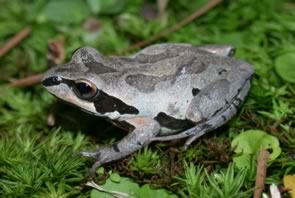
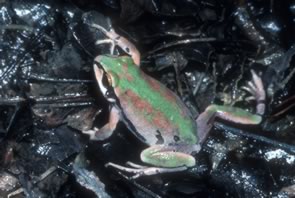
Photo by JD Willson
Some ornate chorus frogs are gray, brown, and green.
Photo
by Trip Lamb
This website created by: Grant Connette and Evan Eskew.
For comments or questions contact M. Dorcas: midorcas@davidson.edu.
M. Dorcas homepage: http://bio.davidson.edu/dorcas
Davidson College, Davidson, North Carolina 28035-1719.
Text and maps from: Dorcas, M. E., S. J. Price, J. C Beane, and S. S. Cross. 2007. The Frogs and Toads of North Carolina. North Carolina Wildlife Resources Commission, Raleigh, NC. – Copyright by Michael E. Dorcas
Partial Funding for this website provided by a Associate Colleges of the South, National Science Foundation, and Duke Energy.
